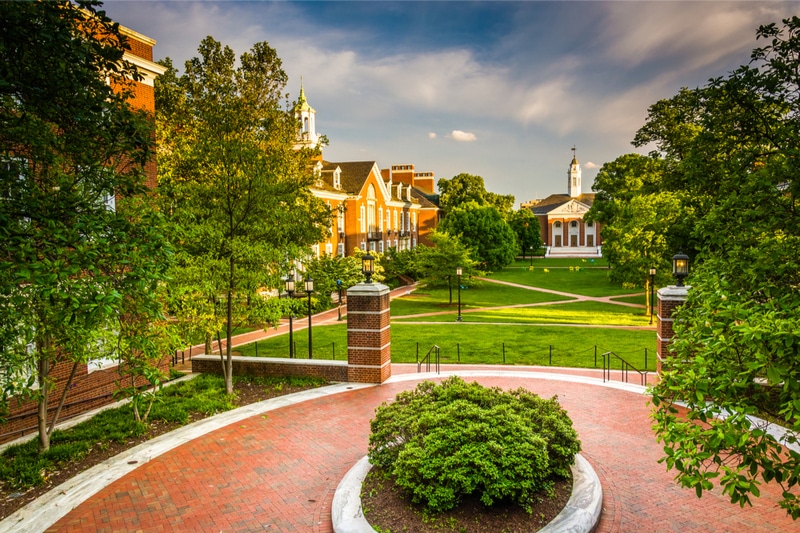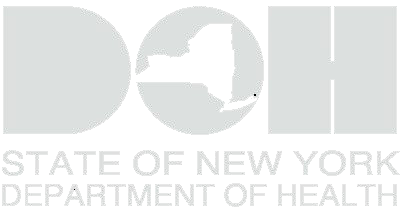
The History of Johns Hopkins University: The First Research University
Daniel Coit Gilman, JHU’s first President
Johns Hopkins University, founded in 1876 takes its name from 19th-century Maryland philanthropist and entrepreneur Johns Hopkins. With the help of the first president, Daniel Coit Gilamn, Johns Hopkins, the nation’s first research university, opened not only the university but other institutions such as the university press, the hospital and the schools of nursing and medicine.
Located in Baltimore, Maryland this private university has just an 11% acceptance rate and is consistently ranked in the top twenty schools in the US. Admissions officers. While acceptance can be difficult, once accepted, students can choose from over fifty-one majors and forty-three minors, many that are nationally ranked. Additionally, a few core values Johns Hopkins looks for when recruiting students are an excitement to learn, strong ties to the community, leadership, courage, innovation, curiosity, and ambition.
Fascinating Facts about Johns Hopkins
- The Johns Hopkins University Press, founded in 1878, is the oldest continuously-operating university press in the United States.
- The university’s graduate programs in public health, nursing, biomedical engineering, medicine, and education are considered among the best in the country, according to U.S. News & World Report.
- Johns Hopkins claims 29 Nobel laureates past and present.
- Claiming he did not deserve the salary he was offered, Albert Einstein turned down an invitation to join the Johns Hopkins faculty in 1927.

The Leader In Research
Since conception, Johns Hopkins has focused its efforts on research and the pursuit of discovery in fields such as humanities, social sciences, natural sciences, engineering, international studies, education, business, health, and medicine.
Over 140 years with research being the core of what this university thrives in has led to incredible advancements including:
Health & Medicine Specific Research
- Cataloged more than 80 percent of the proteins in the human body—the “proteome”—as a biomedical resource
- Showed that half-matched bone marrow transplants are comparable to fully matched tissue
- Developed a blood test for cancer
- First cancer genomes decoded
- Pioneered exchange of kidneys among incompatible donors
- Developed and received FDA-approval for an immunotherapy drug for cancer based on genetic glitch rather than organ site
- Isolated and cultivated human embryonic stem cells, the undifferentiated cells from which an entire human being eventually develops
- Invented the first implantable, rechargeable pacemaker for cardiac disorders
- Discovered restriction enzymes, the so-called “biochemical scissors,” which gave birth to the entire field of genetic engineering
- Developed the “blue baby” operation to correct congenital heart defects, ushering in a new era in open heart surgery
- Helped develop the first effective treatment for sickle cell anemia
- Showed that retrolental fibroplasia, which causes blindness in premature infants, was related to high concentrations of oxygen used in babies’ incubators
Other Areas of Research
- Captured the first color photograph of Earth taken from space
- Identified high rates of infant deaths in motor vehicle accidents, leading to the passage of child safety restraint laws
- The system of water purification by chlorination
- Took the first detailed images of images of Ultima Thule—the most distant space object ever explored
- Designed, built, and operated the Parker Solar Probe, a NASA spacecraft that will travel within four million miles of the surface of the sun
- Confirmed the authenticity of the Dead Sea Scrolls, speeding acceptance as genuine of these earliest biblical manuscripts
- Sent a spacecraft to Mercury to orbit the planet and see its entire surface for the first time
- Designed, built, and operated the New Horizons spacecraft, which completed a flyby of Pluto
- Introduced the rubber glove for use during surgery
- Developed the first supersonic ramjet engine
- Built JEDI, one of nine scientific instruments aboard NASA’s JUNO spacecraft, which is orbiting Jupiter
- Conducted the first large-scale research study of conditions of inequality in American schools, which resulted in the landmark report “Equality of Educational Opportunity“
The Global Impact
Beyond these incredible discoveries and advancements, another thing Johns Hopkins prides themselves on is their global reach. Johns Hopkins typically has 6,000 graduate and undergraduate students that hail from 111 countries each year and more than five hundred undergraduate students have the opportunity to study abroad in forty countries with campuses in locations such as Bologna, Italy, and Nanjing, China. On top of that, there are more than 12,000 alumni that are currently living outside the country that help make up the sixty-three international alumni clubs.
Moving past just their students and alumni, the Johns Hopkins Health System currently treats over almost 4,000 patients from over 145 countries. There are also international research and training sites and programs in more than one hundred countries. Some of their most notable global impacts include:
Johns Hopkins Bloomberg School of Public Health – a leader in public health research and education with practices in more than one hundred countries. This program specifically has had major advancements against health threats such as polio, road traffic injuries, malnutrition, gun violence, HIV/AIDs, and addiction.
Jhpiego – a nonprofit health organization affiliated with the university that has spent more than 40 years in 155 developing countries aiming to improve the health of women and families.
Johns Hopkins Alliance For a Healthier World – an initiative that brings together experts from a range of disciplines to address global health challenges and advance global health equity.
Johns Hopkins Medicine International – a program that offers personalized care for patients traveling to Hopkins from outside of the United States and works closely with affiliates from around the world to help improve global health care.
Johns Hopkins University has made its mark with its research, incredible advancements, groundbreaking discoveries, and global impact with no indication of slowing down. From multiple Nobel Prize recipients, over 2,000 inventions awaiting patents, scientific revelations, and famous alumni – JHU proves to not only be a leader but ahead of the pack when it comes to research, discovery, and global leadership.



